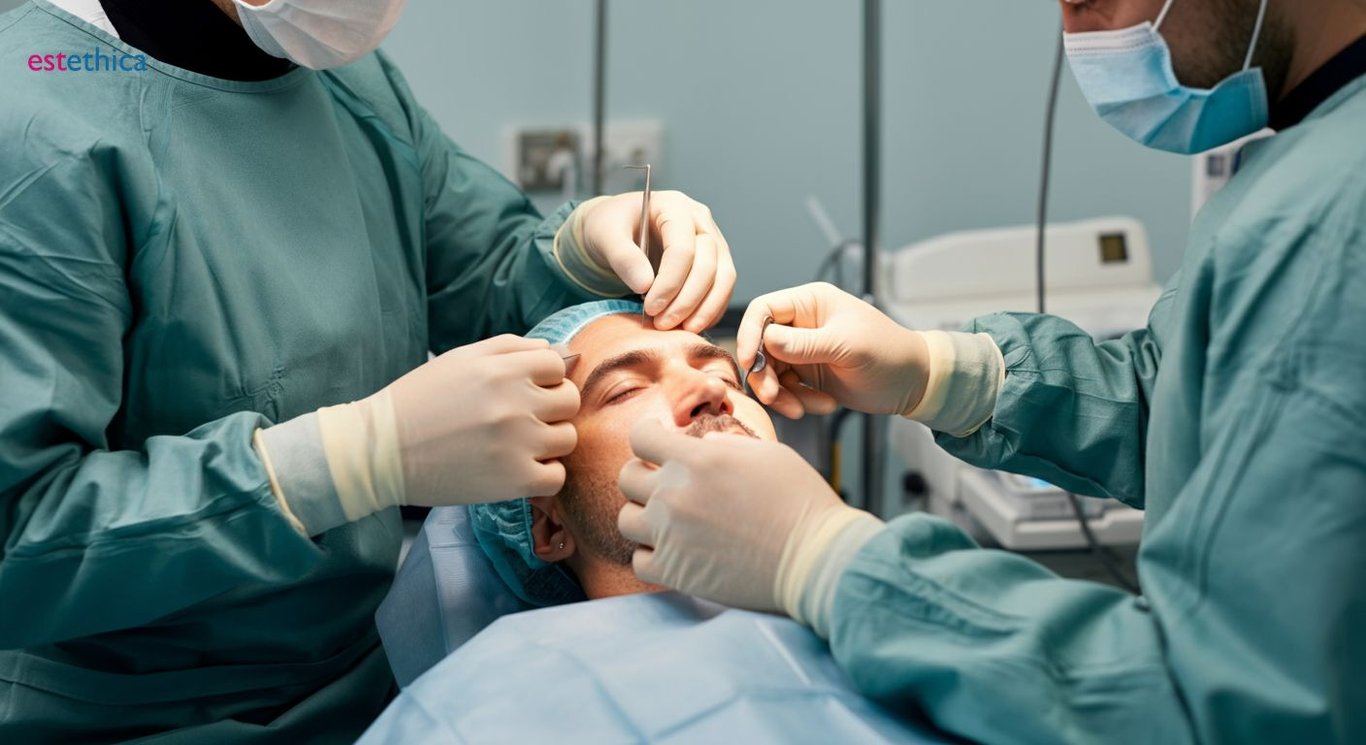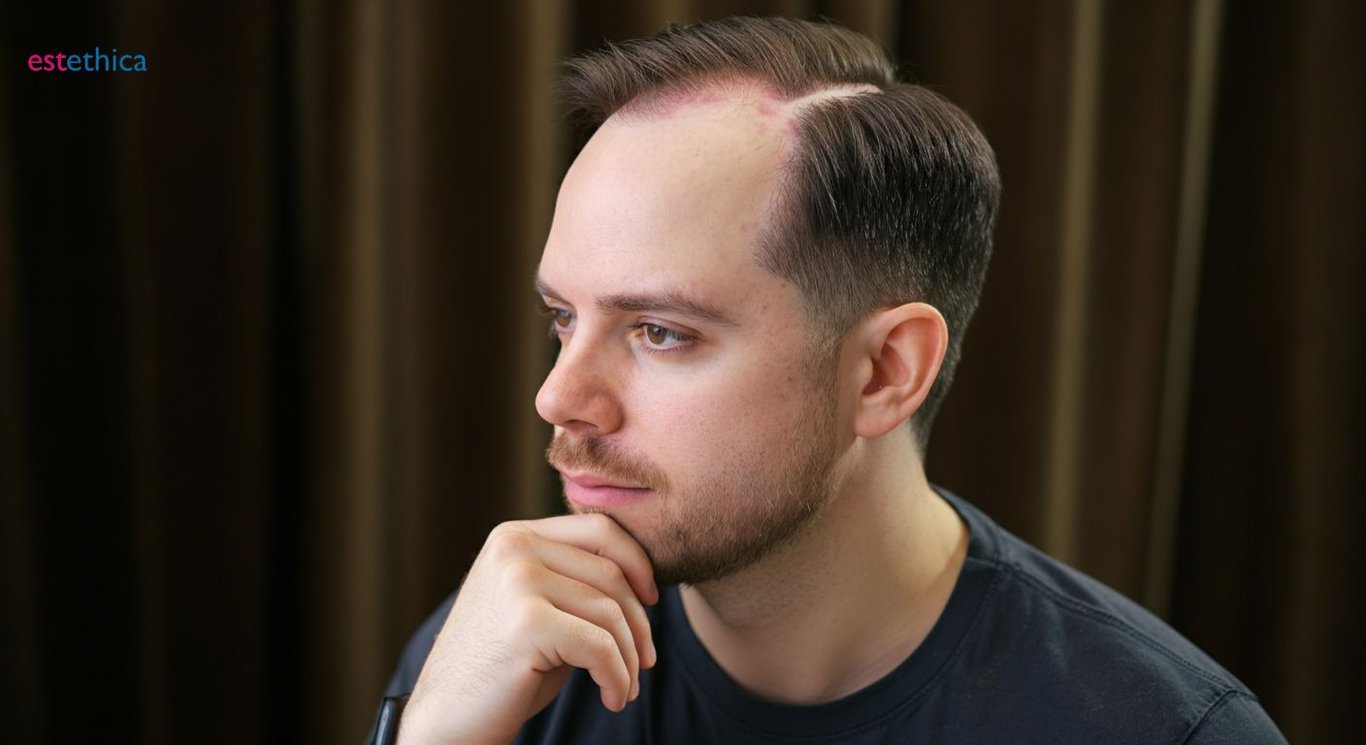Unlock Confidence with Hair Transplant Solutions
Revitalize your appearance and self-confidence with cutting-edge hair transplant solutions tailored just for you. Explore innovative techniques and learn what's possible.
Hair loss can be a challenging experience for many, impacting self-esteem and overall confidence. Fortunately, there are solutions available that can help you regain your confidence and restore your hair. Hair transplant solutions offer a range of innovative and effective techniques designed to cater to various needs and preferences. In this article, we’ll delve into the essential aspects of hair transplantation, explore advanced restoration techniques, navigate through recovery tips, and debunk common myths surrounding the permanence of hair transplants.
Understanding Hair Transplant: What You Need to Know
The Process of Hair Transplant Surgery
Hair transplant surgery is a meticulous process that involves several key steps to ensure a natural-looking result. The procedure typically begins with a consultation where the surgeon assesses the patient's hair loss pattern and discusses the desired outcome. This initial stage is crucial for planning the hairline transplant, ensuring it complements the patient's facial features.
- Donor Site Preparation: The surgeon selects a donor area, usually the back of the scalp, where hair is more resistant to balding.
- Follicular Unit Extraction (FUE): Individual hair follicles are carefully extracted from the donor site using specialized tools.
- Implantation: The extracted follicles are implanted into the balding areas, following the natural hair growth pattern.
This method, known as FUE hair transplant, minimizes scarring and ensures a quicker recovery time. The precision of this technique allows for a seamless integration of transplanted hair, enhancing the overall appearance.
Key Benefits of Hair Transplantation
- Natural Appearance: The procedure replicates the original hairline, providing a natural look.
- Permanent Solution: Unlike temporary hair restoration methods, hair transplants offer a lasting solution.
- Boosted Confidence: Restoring hair can significantly improve self-image and self-assurance.
These benefits make hair transplantation a preferred choice for those seeking effective hair restoration. For more insights into transformative hair transplant techniques, visit Hair Transplant Unveiled: Transformative Insights.

Exploring Advanced Hair Restoration Techniques
Innovative Hair Restoration Methods
Modern hair restoration techniques have revolutionized the way individuals approach hair loss. Follicular Unit Extraction (FUE) is a popular method that involves extracting individual hair follicles and implanting them into thinning areas. This technique minimizes scarring and offers a natural appearance, making it a preferred choice for many. Another advanced method is Direct Hair Implantation (DHI), which allows for precise placement of hair follicles, enhancing the density and natural look of the hairline implant. Scalp micropigmentation, on the other hand, provides a non-surgical option by using micro-needles to deposit pigment into the scalp, creating the illusion of fuller hair.
- FUE Hair Transplant: Minimizes scarring and ensures natural hair growth patterns.
- DHI Technique: Offers precise follicle placement for enhanced hair density.
- Scalp Micropigmentation: Non-surgical option for a fuller hair appearance.
These techniques cater to different needs and preferences, providing tailored solutions for hair restoration.
Factors Influencing Hair Restoration Choices
Choosing the right hair restoration method depends on several factors, including the extent of hair loss, scalp condition, and personal goals. For instance, individuals with minimal hair loss might opt for scalp micropigmentation to enhance their hairline without surgery. Those seeking permanent solutions often consider FUE or DHI, as these methods offer lasting results. It's essential to consult with a specialist to determine the best approach for your specific needs.
- Assess Hair Loss: Evaluate the extent and pattern of hair loss.
- Consult a Specialist: Discuss options and expectations with a hair restoration expert.
- Select a Technique: Choose a method that aligns with your goals and scalp condition.
By understanding these factors, individuals can make informed decisions about their hair restoration journey, ensuring optimal outcomes and satisfaction.

Navigating Hair Transplant Recovery: Tips and Insights
Understanding the Recovery Timeline
The recovery timeline for a hair transplant is a critical phase that influences the final results. Initially, patients may experience some swelling and discomfort, which typically subsides within a few days. It's important to avoid strenuous activities during this period to prevent any disruption to the grafts. By the second week, the transplanted hair may begin to shed, a normal part of the process known as "shock loss." This phase is temporary, and new hair growth usually starts within a few months.
- Initial Healing: Manage swelling and avoid physical exertion.
- Shedding Phase: Expect temporary hair loss as part of the process.
- New Growth: Noticeable hair growth begins after a few months.
Understanding these stages can help set realistic expectations and reduce anxiety during recovery.
Essential Post-Procedure Care Tips
Proper post-procedure care is vital for a successful hair transplant recovery. Patients should follow their surgeon's instructions meticulously to ensure optimal healing and hair growth. Keeping the scalp clean and avoiding direct sunlight are crucial steps. Additionally, using recommended shampoos and avoiding harsh chemicals can protect the sensitive graft sites.
- Gentle Cleansing: Use mild shampoos to maintain scalp hygiene.
- Sun Protection: Wear a hat or use sunscreen to shield the scalp.
- Follow-Up Visits: Regular check-ups with your surgeon to monitor progress.
These care tips not only promote healing but also enhance the longevity of the hair transplant results, ensuring a fuller and more natural appearance.

Is Hair Transplant Permanent? Debunking Myths
Understanding the Longevity of Hair Transplants
Hair transplants are often perceived as a permanent solution to hair loss, but understanding their longevity requires a deeper look. The transplanted hair, typically sourced from areas resistant to balding, such as the back of the scalp, tends to maintain its characteristics even after being moved. This means that the hairline transplant can offer lasting results, mimicking natural hair growth patterns. However, it's crucial to acknowledge that the surrounding non-transplanted hair may continue to thin over time, potentially affecting the overall appearance.
- Donor Hair Resilience: Transplanted hair retains its resistance to balding.
- Natural Growth Patterns: Hair grafting follows the natural direction and density.
- Ongoing Care: Regular maintenance is essential for optimal results.
These factors highlight the importance of setting realistic expectations and understanding the role of ongoing care in maintaining the results of a hair transplant.
Factors Affecting Hair Transplant Permanence
Several factors influence the permanence of hair transplant results. Age, hair type, and lifestyle choices play significant roles in determining how long the effects last. For instance, younger individuals may experience further hair loss, necessitating additional procedures. Lifestyle factors, such as diet and stress levels, can also impact hair health and longevity. Additionally, the skill of the surgeon and the technique used, such as FUE hair transplant, can affect the outcome.
- Age and Hair Loss Progression: Younger patients may require future touch-ups.
- Lifestyle and Hair Health: Diet and stress management are crucial for maintaining results.
- Technique and Expertise: The method and surgeon's skill influence success.
Understanding these elements can help individuals make informed decisions about their hair restoration journey, ensuring they achieve the best possible outcomes.
Innovative Hair Restoration Techniques: FUE and DHI
Excellence in Hair Transplant Recovery and Care
Frequently Asked Questions
What is the process of a hair transplant surgery?
How does Follicular Unit Extraction (FUE) differ from other techniques?
Is a hair transplant a permanent solution to hair loss?
What are the key benefits of hair transplantation?
What factors should be considered when choosing a hair restoration method?
Discover the path to 'Healthy Beauty' with estethica's expert care. Call now for your free consultation and take the first step towards a more confident you!
📞 Call Us Today for Expert Advice!